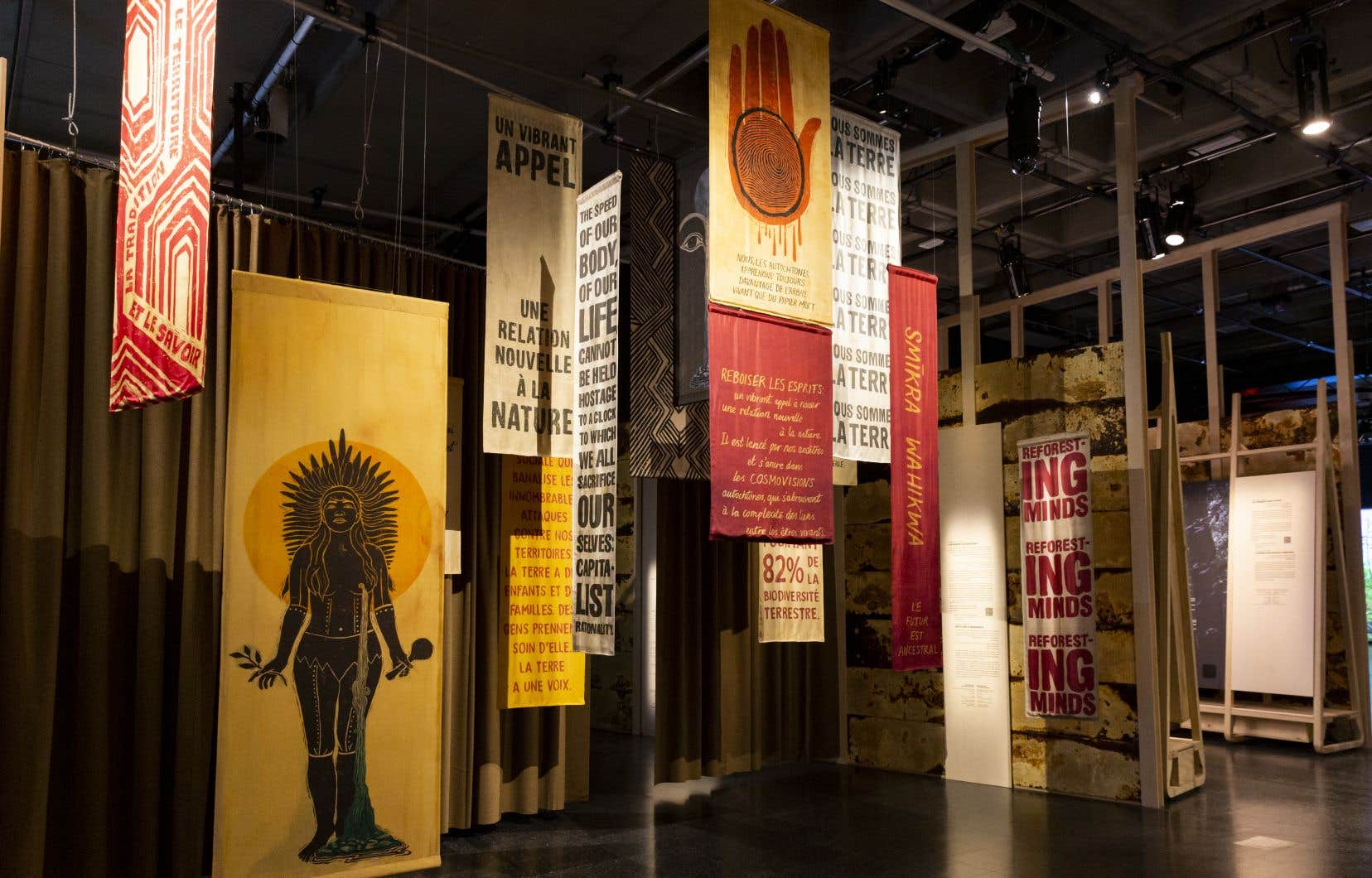In the smoke of the fires that are devouring Canada, the future is hard to imagine. But it is of course the future that the artists and entrepreneurs who took part in the brand new exhibition at the Musée de la civilization du Québec are looking into.
For tomorrow proposes a reflection on climate change woven with hope, for the planet, or for human beings if they so choose.
The genesis of the exhibition begins at the Barbican art center in London. “We looked at the role that museums and institutions could play in the climate change crisis. We wondered if even that was their role. The answer was yes,” said this week Luke Kemp, co-director of the Barbican museum, passing through Quebec. However dramatic the climate crisis we are experiencing may be, it is by celebrating the courage and ambition to provide solutions that the museum institution wanted to intervene, by presenting works that demonstrate the splendor of the treasures to be protected. “It was clear to us that we had to explore the subject in a stimulating way,” he says.
And it is with a video presenting a magnificent tree, the Ceiba pentandra, arisen in the Colombian forest, as the exhibition begins. The camera pierces the movements of the tree, from the tips of its branches to the depths of its roots, near the rivers of carbon and the bridge of mycelium. “What if our way of living was guided by this state of openness, by this intimate understanding of the role that each being plays in the world? Here is a sanctuary, a place to reflect,” comments the Marshmallow Laser Feast team who designed the installation, in the accompanying documents. The immersive installation The world under our feet, by George Monbiot, looks at the tiny root hairs, bacteria and microbes that grow in the soil and feed plants. As paltry in size as they seem, they are responsible for 99% of our diet. Further, we find the model of the future electric tramway of Quebec…
Green initiatives
With these reflective works on the most intimate movements of life on earth, the Musée de la civilization had the happy idea of mixing different ecological initiatives by Quebec entrepreneurs, from vertical farms to the manufacture of silk objects from milkweed, through energy-autonomous houses and the recycling of building bricks.
Although very marginal, these initiatives are promising, even encouraging. It is with the aim of saving the species of monarch butterflies, which were on the verge of extinction, that Lasclay, a company from Limoilou, embarked on the cultivation of milkweed, the host plant of monarchs. But harvesting the precious silks of this plant has far greater benefits. Thus, Lasclay uses it to produce winter mittens and scarves, as well as bags. “It’s the best insulator in the world”, considers one of the company’s founders, Gabriel Gouveia.
We looked at the role museums and institutions can play in the climate change crisis. We wondered if even that was their role. The answer was yes.
Tommy Bouillon, of Brique Recyc, has designed a portable machine to recycle brick, a perfectly reusable material, but often expensive to recover. These bricks are often taken from local mines, he notes. We owe the company Mycélium Remedium to have designed the walls of the exhibition, using an insulating material made from mycelium and hemp, coffee grounds, sawdust and spent grains.
The fear of scarcity
Artist kanien’keha:ka Skawennati created the artwork The Three Sisters: Reclaiming Abundance, where she pays homage to the three sisters, the squash, the corn and the bean, venerated in her community. “In the Kanien’keha:ka language, the name of these plants means: ‘they give us life,’” she says. Her installation presents the three sisters in the form of three young women, superheroines of modern times.
Skawennati reflects on the fear of missing out, which hangs over Western society. Fear of running out of money, fear of running out of likes on the Internet, she adds with a laugh. “We can still have abundance, we don’t have to fear scarcity”, if the resources are well managed, she specifies.
“I try to think of a world where Indigenous people are not just survivors, but thriving. And I asked myself the question: “why do we want to be Aboriginal rather than to assimilate?”. And I found great values. Among these, there is thanksgiving, by which we thank the earth for having given us such great things, and there are also the three sisters. »
Ideas, projects, so there are plenty of them. It remains to find the will to democratize them, to give them the springboard to firmly anchor them in today’s reality. “I trust us to finally do the right thing,” Skawennati said. But I don’t trust companies. They are stronger than us now. They are not acting in the best interests of humans. »
Caroline Montpetit was the guest of the Musée de la civilization du Québec.
